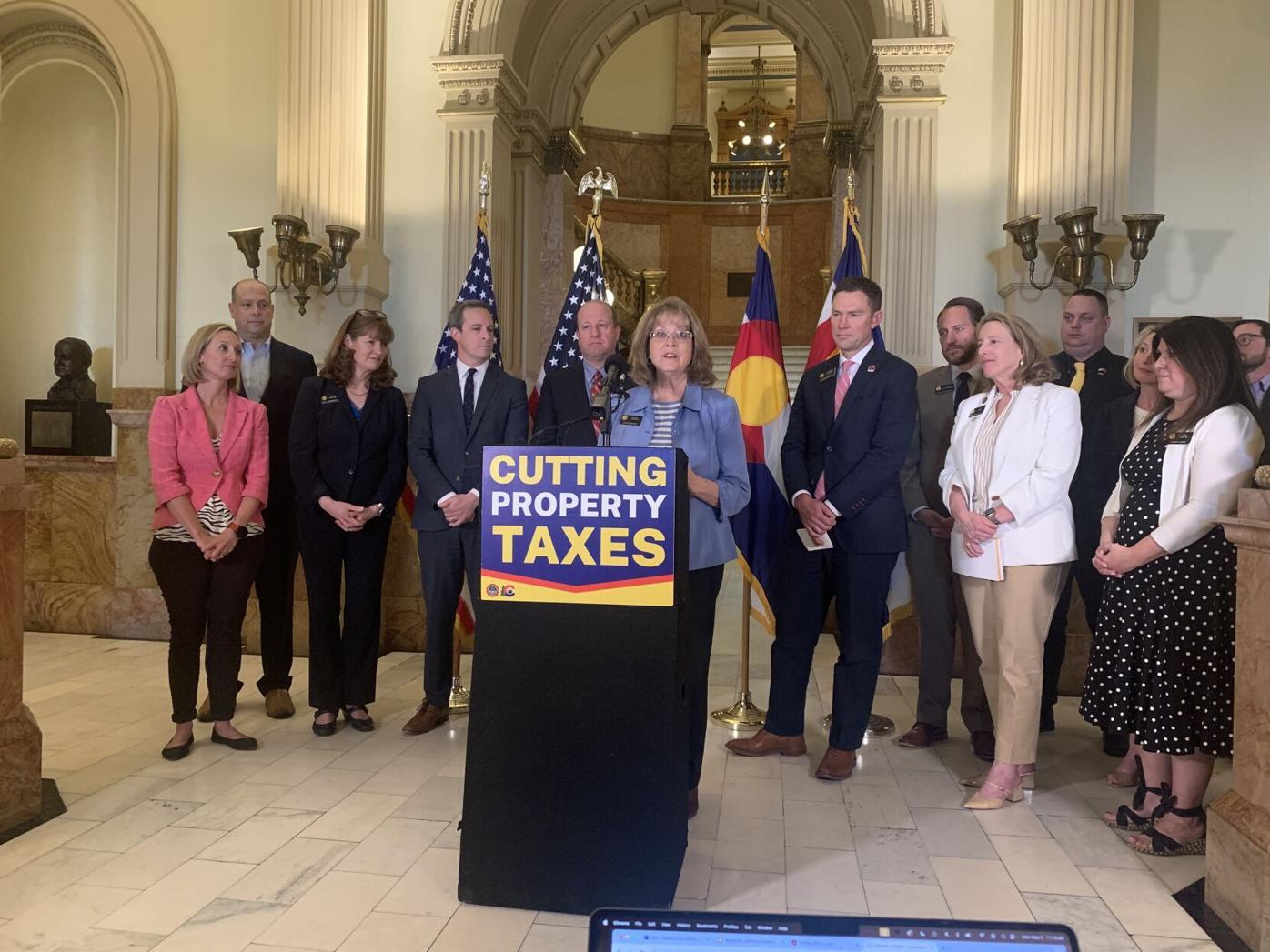Property tax deal advances, faces a tight deadline to the finish
Just hours after Gov. Jared Polis and legislative leaders unveiled a property tax deal, the legislation containing the agreement sailed through two committees on Monday and won approval from the state Senate the day after.
Over the next three years, the deal is expected to result in $3.7 billion in property tax relief, supporters said.
Already, a fight at the ballot box is beginning to take its shape, with at least one initiative seeking a reduction in residential and business property tax rates down to roughly 2022 levels and capping future revenue growth to no more than 4% year over year.
Proponents of that ballot measure said they are not convinced the agreement struck by Polis, Democrats and Republicans in the Colorado General Assembly and several groups would offer meaningful relief to businesses and homeowners.
Meanwhile, the deal’s supporters said it would do exactly that — while taking into account the fiscal needs of local government and school districts.
The points raised by both sides will likely form the backbone of the arguments the public will hear during the general election in November.
Senate Bill 233 faces a tight timeline.
The chamber’s State, Veterans and Military Affairs and Appropriations committees advance the measure, which won final approval from the Senate on a 33-2 vote. Sen. Mark Baisley, R-Woodland Park, a member of the property tax commission, voted no.
The measure now heads over to the House, where it must get through committees on Tuesday, as well as preliminary approval by the chamber to reach a final House vote on Wednesday, the last day of the 2024 regular session.
SB 233 is the result of negotiations with the governor, lawmakers on both sides of the aisle and outside groups, including Colorado Concern, Colorado Counties, Inc., the Bell Policy Center, and several chambers of commerce.
Sen. Chris Hansen, D-Denver, told the state affairs committee Monday the bill is the culmination of a half-dozen years of work on the issue of property taxes.
After voters approved the repeal of the Gallagher amendment, which had held property tax rates stable for homeowners but resulted in skyrocketing rates for commercial buildings, lawmakers were on the hook for finding a solution.
That solution had remained elusive. Voters soundly rejected a measure sent by Democratic lawmakers to the 2023 ballot.
Hansen called Senate Bill 233 a long-term solution, adding, “It provides a clear roadmap for reducing property taxes in both the residential and the non-residential categories.”
For 2025 only, the assessed value on residential properties will be set at 6.7%. Beginning in 2025, it changes to a 10% reduction in home assessment values for homes valued at up to $700,000 plus a 6.95% assessment rate. Hansen said that would help lower and middle-income families.
The percentage, rather than a flat reduction of $55,000 — which had been part of previous property tax bills — is necessary because of how that flat rate would affect parts of the state, in which home values are significantly less than for homes on the Front Range, particularly on the Eastern Plains and where the median home price might be $150,000 rather than $500,000.
Commercial properties would see a reduction in their assessment rates over the next two years, from 29% to 25%, a major part of the compromise sought by Republicans.
SB 233 creates two assessed values for residential properties, beginning with the 2025 property tax years. The first is a value used for mill levies assessed by school districts; the second is the mill levy used for all other local government entities. The rates are 7.15% and 6.95%, respectively.
Sen. Barbara Kirkmeyer, R-Weld County, said the bill will not require tapping the TABOR surplus nor will it result in a restart of the state’s debt to K-12 education. Over the next three years, she said, property tax relief will total about $3.7 billion.
Kirkmeyer also noted another major difference between the 2023 bill that turned into Proposition HH and SB 233 — public input. The property tax commission traveled around the state to seek public input, and much of the bill reflects that work, she said.
To pay for the property tax relief, according to the fiscal analysis, starting in 2024-25 and continuing into the future, the bill will lower the General Fund reserve requirement to 14% of appropriations, from 15%. That will bring in about $155.7 million, the analysis said.
Special districts — fire, hospital, library and others — earlier expressed worries about the potential reductions in revenue and the lack of backfill to cover those changes.
Amendments adopted late Monday night appeared to have addressed most of those concerns, with a $10.3 million infusion to cover the backfill, as well as amendments on bonds and tax-incremental financing sought by the Colorado Municipal League and others.
Critics, meanwhile, maintained that the agreement will not result in a “material tax relief.”
“Colorado Concern and its leadership have worked in good faith with the legislature for months toward meaningful and long-term property tax relief. Unfortunately, SB 24-233 does not represent material tax relief for Colorado homeowners and small business owners,” Dave Davia, CEO of Colorado Concern, said in a statement.
“A deal has not been reached at this time. We are committed to continuing to work toward a legislative solution in the final days of the session but have not removed our support for Initiatives 50 and 108.”
Davia was part of the weekend negotiations that resulted in SB 233.
Senate President Steve Fenberg, D-Boulder, told reporters Tuesday that Colorado Concern got almost everything it asked for, and that “it was frustrating to see organizations publicly dispute a policy they helped shape.”
“The organization is not taking actions that will increase their relevance in this building,” he said.
Michael Fields of Advance Colorado, which put Initiative 50 on the ballot and is in the signature gathering phase for initiative 108, argued that SB 233 does not provide the property tax relief its backers claim.
“The effective tax rate on homes goes up compared to the rate now. People just experienced a 25% increase this year — and this just lets it increase more. Our measures actually cut and cap property taxes,” he said.
Under Advance Colorado’s proposal, only a vote of the public would allow a local government to collect above the 4% cap in new property tax revenue in a year.
In addition to the 4% revenue cap, the ballot measure would cut the residential property tax rate from 6.7% to 5.7%, which the groups said would effectively return the rate to near 2022 levels. That mechanism would “erase” the massive property tax hikes that homeowners expect to see in the coming weeks, the groups said, noting that, as a result of the Taxpayer’s Bill of Rights, lawmakers “could never increase these tax rates.”
Second, it would exempt the first $55,000 in home value from the property tax. The groups said this would offer middle and low-income property owners tax relief “comparable to what the Gallagher Amendment would have delivered, except without the anti-business impact that was the bane of Gallagher.”
As to concerns that Initiative 50 would gut public education funding, Fields said the state has to backfill education.
“The legislature just wants to spend on other things. But a 4% increase every year will cover the education increase in most years anyway,” he said.






